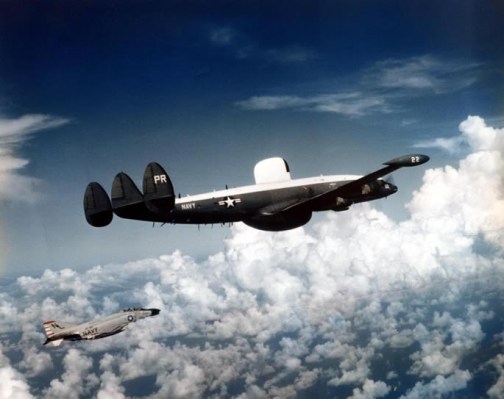Navy personnel carry a wreath during a memorial service this week for “Deep Sea 129” at Misawa Air Base, Japan. The solemn service is held every year.
TOKYO – With North Korea still issuing threats and invective, it’s worth turning attention to the U.S. air base in Misawa, Japan. That’s where a memorial service was held Tuesday marking the 44th anniversary of the downing of a U.S. reconnaissance aircraft by North Korean MiGs in 1969. Thirty-one American crewmen died in the shootdown.
It’s no coincidence, perhaps, that the incident took place on April 15 – the birthday of North Korea’s founder, Kim Il Sung. The country’s reclusive leaders have repeatedly used the occasion to issue threats, launch missiles or spring other unpleasant surprises on its neighbors (see dispatch from Battleland colleague Jay Newton-Small here).
The Navy EC-121 was shot down by two MiG-21 fighters about 90 miles off the northeast coast of North Korea on what was expected to be a routine reconnaissance flight. North Korea claimed the aircraft violated its airspace; U.S. authorities said it did not.
At the Misawa memorial service Tuesday, each crew member’s name was read aloud, accompanied by the ringing of two bells. A Japanese Self Defense Force bugler played taps, and a wreath was cast into the sea.
“Their mission — call sign ‘Deep Sea 129’ — was referred to as intelligence gathering,” said Capt. Dave Wright, deputy commander of Task Force 72, at the service. “Two-hundred of these flights were executed without incident in just the first three months of 1969…. However, that mission was never completed, the aircraft was never recovered. Thirty sailors and one Marine never saw home base again.”
Misawa is located in northeastern Japan, about 400 miles from the spot where Deep Sea 129 was believed shot down.
The incident marked one of the greatest losses of life during the Cold War, yet remains little noted even today. The Nixon administration had been in office fewer than 100 days when the aircraft was destroyed and was keen to downplay the incident. America was falling deeper into the unpopular Vietnam War. It was still dealing with the humiliation of North Korea’s seizure of the U.S. Navy’s USS Pueblo.
The U.S. military resumed reconnaissance flights off the coast of North Korea a week after Deep Sea 129 was downed. But no retaliation was ever taken for the loss of the aircraft or crew.
The Pueblo, a spy ship, was captured by North Korean gunboats in January 1968. One crewman was killed; the 82 survivors were held for 11 months. The ship remains tied up at pier in the capital of Pyongyang, where it serves as a tourist attraction.
While U.S. officials originally thought the Soviet Union had ordered North Korea to seize the Pueblo, it has become increasingly clear in recent years that Pyongyang took the action on its own, upsetting Moscow.



